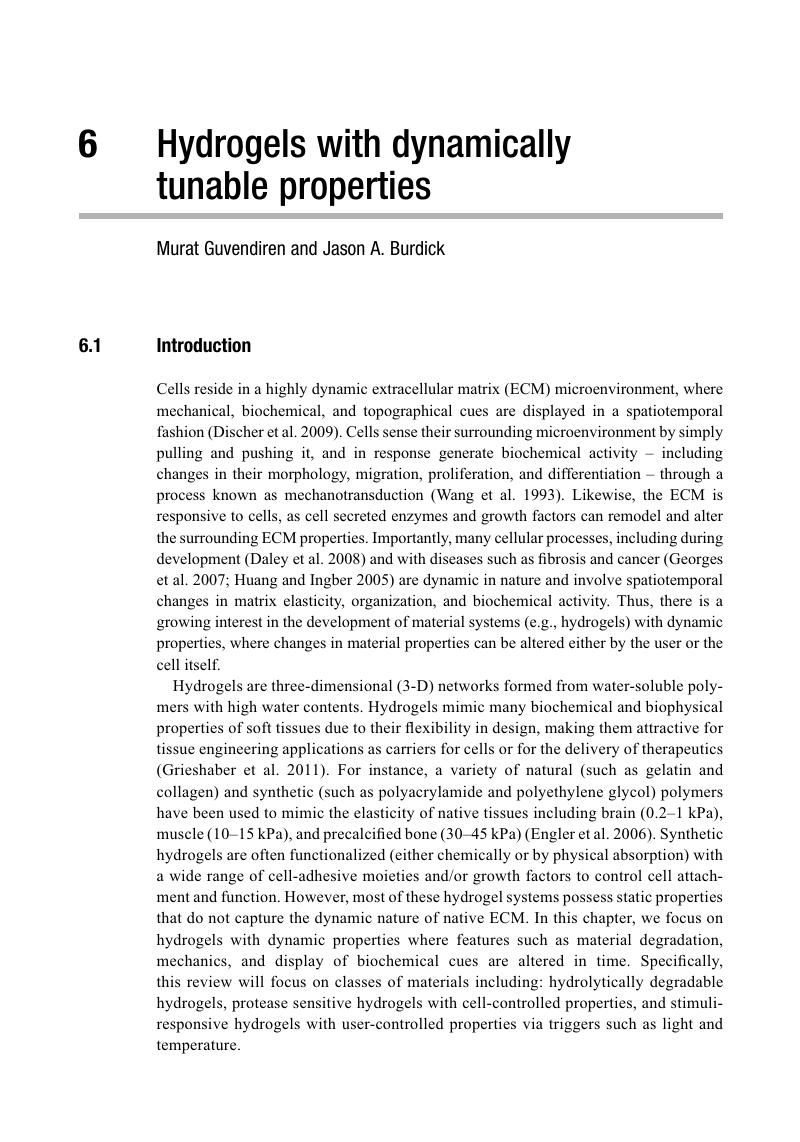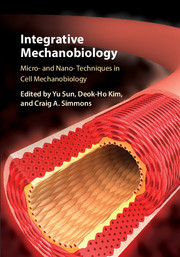Book contents
- Integrative Mechanobiology
- Integrative Mechanobiology
- Copyright page
- Contents
- Contributors
- Preface
- Part I Micro-nano techniques in cell mechanobiology
- 1 Nanotechnologies and FRET imaging in live cells
- 2 Electron microscopy and three-dimensional single-particle analysis as tools for understanding the structural basis of mechanobiology
- 3 Stretchable micropost array cytometry
- 4 Microscale generation of dynamic forces in cell culture systems
- 5 Multiscale topographical approaches for cell mechanobiology studies
- 6 Hydrogels with dynamically tunable properties
- 7 Microengineered tools for studying cell migration in electric fields
- 8 Laser ablation to investigate cell and tissue mechanics in vivo
- 9 Computational image analysis techniques for cell mechanobiology
- 10 Micro- and nanotools to probe cancer cell mechanics and mechanobiology
- 11 Stimuli-responsive polymeric substrates for cell-matrix mechanobiology
- Part II Recent progress in cell mechanobiology
- Index
- References
6 - Hydrogels with dynamically tunable properties
from Part I - Micro-nano techniques in cell mechanobiology
Published online by Cambridge University Press: 05 November 2015
- Integrative Mechanobiology
- Integrative Mechanobiology
- Copyright page
- Contents
- Contributors
- Preface
- Part I Micro-nano techniques in cell mechanobiology
- 1 Nanotechnologies and FRET imaging in live cells
- 2 Electron microscopy and three-dimensional single-particle analysis as tools for understanding the structural basis of mechanobiology
- 3 Stretchable micropost array cytometry
- 4 Microscale generation of dynamic forces in cell culture systems
- 5 Multiscale topographical approaches for cell mechanobiology studies
- 6 Hydrogels with dynamically tunable properties
- 7 Microengineered tools for studying cell migration in electric fields
- 8 Laser ablation to investigate cell and tissue mechanics in vivo
- 9 Computational image analysis techniques for cell mechanobiology
- 10 Micro- and nanotools to probe cancer cell mechanics and mechanobiology
- 11 Stimuli-responsive polymeric substrates for cell-matrix mechanobiology
- Part II Recent progress in cell mechanobiology
- Index
- References
Summary

- Type
- Chapter
- Information
- Integrative MechanobiologyMicro- and Nano- Techniques in Cell Mechanobiology, pp. 90 - 109Publisher: Cambridge University PressPrint publication year: 2015
References
- 1
- Cited by

